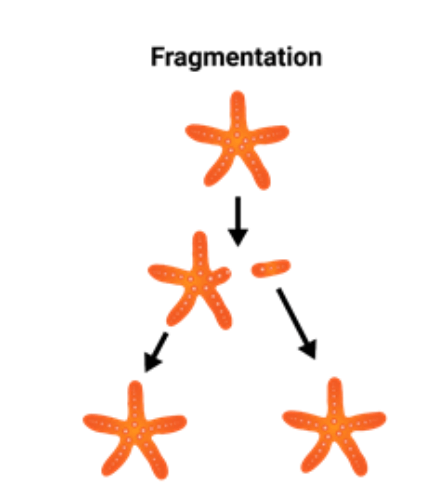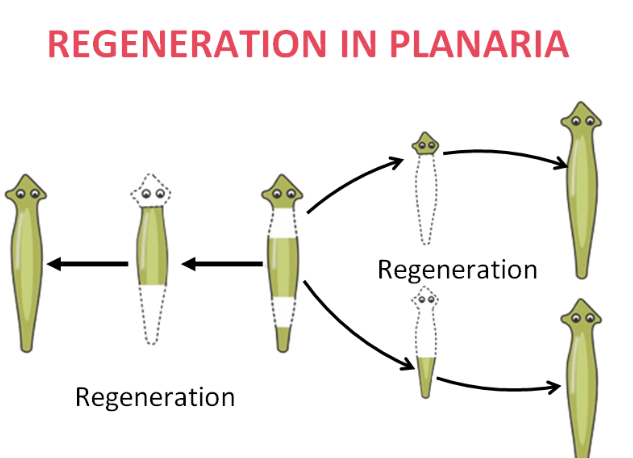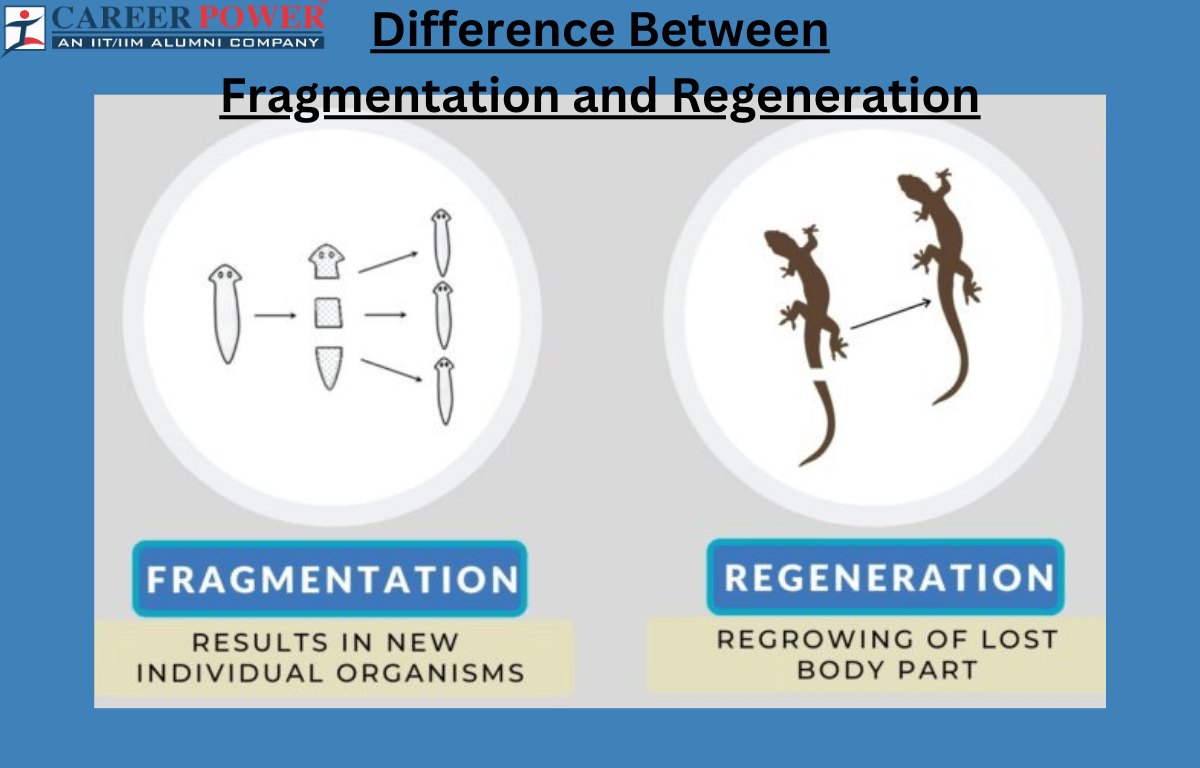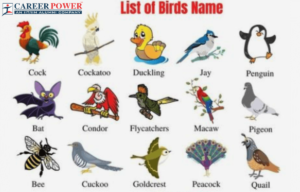Table of Contents
Asexual reproduction is a type of reproduction that does not involve the fusion of gametes (sex cells). It is counted as one of the important topics in Biology. There are several types of asexual reproduction namely: Binary fission, Budding, Fragmentation, Vegetative propagation, Spore formation, Parthenogenesis, and Regeneration. These methods of asexual reproduction allow organisms to reproduce efficiently and rapidly without the need for a mate. Here we have briefly described the difference between Fragmentation and Regeneration below in the article.
Fragmentation and Regeneration
Both fragmentation and regeneration are asexual modes of Reproduction, meaning they do not involve the fusion of gametes (sperm and egg cells) and the forming of offspring with genetic contributions from two parents. In both fragmentation and regeneration, the resulting offspring are genetically identical to the parent organism, and these processes are key mechanisms for asexual reproduction in the natural world.
What is Fragmentation?
Fragmentation is a process in which an organism breaks into fragments, and each fragment can grow into a new individual. In biology, this phenomenon is often seen in some plants and animals. For example, in plants like ferns, a single leaf can be fragmented, and each part can develop into a new fern plant. Similarly, in some animals like starfish, if a part of the body is separated, it can regenerate into a complete organism. Fragmentation is a form of Asexual Reproduction, allowing organisms to reproduce without the involvement of gametes (sperm and egg cells) or fertilization.

What is Regeneration?
Regeneration is the process by which an organism can replace or restore lost or damaged body parts, tissues, or organs. This remarkable ability is found in various organisms across the biological spectrum, including some animals, plants, and even certain fungi. In the context of animals, organisms like starfish, salamanders, and certain types of worms have the ability to regenerate lost limbs or other body parts.

In plants, regeneration can occur from specialized cells, allowing them to grow new roots, shoots, or even whole plants from cutting or fragments. This process is harnessed in agriculture for practices like cloning and propagation of plants.
The extent of generation varies across different organisms and can range from simple tissue repair to the complete regrowth of complex structures. Regeneration plays a vital role in the healing and adaptation of organisms to their environment, enabling them to recover from injuries or environmental stresses.
Difference Between Fragmentation and Regeneration
The main difference between fragmentation and regeneration lies in their processes and outcomes. In summary, fragmentation refers to the division of an organism into fragments, each capable of growing into a new organism, while regeneration refers to the ability of an organism to regrow specific body parts or tissues that have been lost or damaged. The differences mentioned below highlight the varied aspects of fragmentation and regeneration in different biological contexts.
| Difference Between Fragmentation and Regeneration | ||
| Aspects | Fragmentation | Regeneration |
| Definition | Type of sexual reproduction where an organism breaks into fragments, each capable of growing into a new organism. | The ability of an organism to regrow lost or damaged body parts, tissues, or organs. |
| Occurrence | Fragmentation occurs in certain plants (e.g., ferns) and animals (e.g., starfish). | Regeneration occurs in various organisms, including animals (e.g., salamanders) and plants (e.g., certain trees and shrubs). |
| Process | In this process, organisms split into parts, and each part can grow independently into a complete organism. | During the process of regeneration, replacement, or repair of specific body structures that have been damaged or removed takes place. |
| Purpose | Reproduction without involvement of gametes (asexual reproduction). | Healing, recovery from injuries, and adaptation to changes in the environment. |
| Limitations | Not all organisms can reproduce through fragmentation. It is limited to species with this specific adaptation. | Regeneration abilities vary widely among different organisms. While some can regrow complex structures, others have limited regenerative capabilities. |
| Types of Organisms | Common in simpler organisms such as certain plants, algae, and invertebrates. | Found in a wide range of organisms, including both simple (like hydra) and complex (like mammals) species. |
| Speed of Process | Fragmentation can quickly develop into new organisms, as they don’t rely on complex regrowth processes. | Regeneration processes can vary in speed, from relatively rapid regrowth in certain plants to slower, more complex regeneration of organs in animals. |
| Examples | Fern leaves can be fragmented, and each part can grow into a new fern plant. Starfish can regenerate lost arms. | Salamanders can regrow lost limbs. Certain plants can regrow roots or shoots from cutting. |
Limitation of Fragmentation and Regeneration
Understanding all the limitations is crucial for appreciating the complexities of fragmentation and regeneration processes and for developing strategies to mitigate their limitations, especially in the context of conservation efforts and medical research.
Limitation of Fragmentation
- Fragmentation results in genetically identical offspring, leading to reduced genetic diversity within populations. Lacks of genetic diversity can make the population vulnerable to disease and environmental changes.
- Fragmentation success often depends on specific environmental conditions. Fragments might not survive or grow into new organisms if they are not in sustainable environments with necessary resources like water, nutrients, and sunlight.
- Fragmentation is a reproductive strategy found in specific organisms. Many complex organisms, including most complex organisms, including most mammals and birds, cannot reproduce through fragmentation, limiting its applicability in the Animal kingdom.
Limitations of Regeneration
- Regeneration processes require significant energy and resources. Depending on the complexity of the organism or the lost body part, the regeneration process can be energetically expensive and might divert resources from other essential life processes.
- While some organisms can regenerate entire body parts, others have limited regenerative abilities. For example, humans can regenerate certain tissues but have limited capacity for regrowing major organs or limbs, which poses challenges in medical treatments and organ transplantation.
- Regeneration processes can be time-consuming. The time it takes to regrow a body part varies widely among different organisms and can impact the organism’s survival, especially if quick regrow is necessary for escape from predators or other threats.
- Regenerated tissues or organs might not always develop perfectly, leading to abnormalities or functional impairments. This limitation is a significant concern in both natural regeneration processes and in medical applications involving tissue regeneration.








 50 Vegetables Name for Kids in English a...
50 Vegetables Name for Kids in English a...
 Flowers Names in English and Hindi, List...
Flowers Names in English and Hindi, List...
 Birds Names in English, List of 50 Birds...
Birds Names in English, List of 50 Birds...









